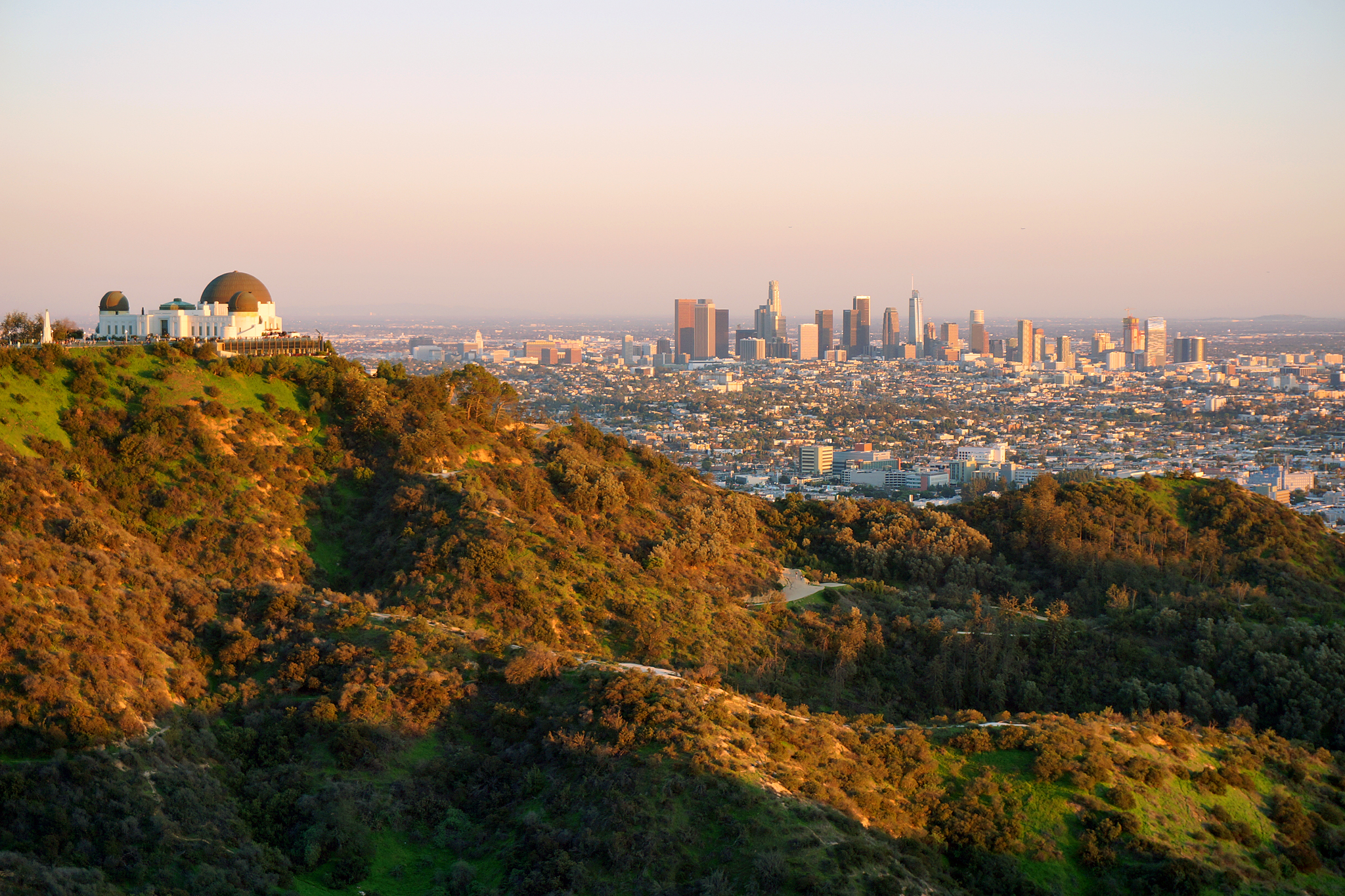Urbanization is the transformation of unoccupied or sparsely occupied land into densely occupied cities. Urban areas can grow from increases in human populations or from migration into urban areas. Urbanization often results in deforestation, habitat loss, and the extraction of freshwater from the environment, which can decrease biodiversity and alter species ranges and interactions. Human activities in urban areas, such as the burning of fossil fuels and industrial waste also increases pollutants in the environment that can affect the health of humans and other species.

Downtown Los Angeles as viewed from Griffith Park, which is home to a various animals including deer, skunks, coyotes, and a mountain lion. Source: Flickr
Urbanization can impact the Earth system in a variety of ways, including:
- Causing habitat loss and deforestation, which can decrease species populations, ranges, biodiversity, and alter interactions among organisms.
- The evolution of life cycles and traits that help species survive and reproduce in distrubed or altered ecosystems. For example, some bird populations living in urban environments have altered their beak shape to be able to more effectively eat the seeds in human-made bird feeders.
- The transmission of diseases. Humans living in densely populated areas can rapidly spread diseases within and, with the ease and volume of transportation, among populations.
- Increasing the transport of invasive species, either intentionally or by accident, as people travel and import and export supplies in and out of cities. Urbanization also creates disturbed environments where invasive species often thrive and outcompete native species. For example, many invasive plant species thrive along strips of land next to roads and highways.
- Increasing regional temperatures. The use asphalt and other dark colored materials in urban areas increases the amount of sunlight absorbed. This creates urban heat islands, whereby cities experience higher temperatures than surrounding areas.
- Paving land with concrete can increase water runoff, increasing erosion and decreasing soil quality. This can also decrease water quality by increasing sediment and pollutants in rivers and streams.
- Changing how much and how fast water cycles through the biosphere and atmosphere. Trees and other plants return a significant proportion of precipitation to the atmosphere via a process called transpiration. Thus, the loss of plant productivity and biomass decreases the amount of water cycling through the biosphere and atmosphere, while increasing plant productivity and biomass increase the amount of water cycling.
Can you think of additional cause and effect relationships between urbanization and other parts of the Earth system?
Visit the agricultural activities, deforestation and reforestation, and habitat loss and restoration pages to learn more about how processes and phenomena related to land use affect global climate and ecosystems.
Investigate
Learn more in these real-world examples, and challenge yourself to construct a model that explains the Earth system relationships.
- Urban Evolution
- A country weed with city problems
- Ancient bones, modern problems: One scientist’s trash is another scientist’s data
- Evolution explains mosquitoes’ taste for human blood
Links to Learn More
